A Genetically Engineered Burger?
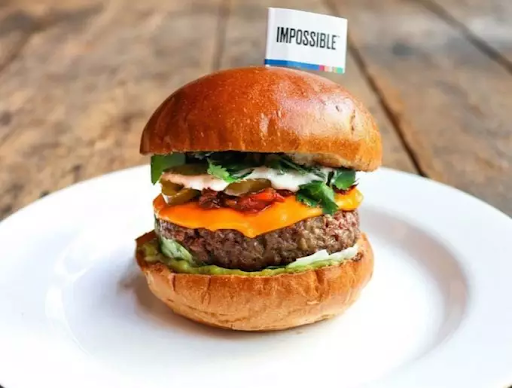
May 16, 2023
McDonald’s alone loves to boast about the fact that as a company, they sell over 5 billion burgers per year. That alone is killing 25 million cows per year. Now anyone can attest to the fact that protein in your diet is important and typically the first thing that comes to mind when talking about protein is some kind of meat, but at what cost? What seemed to have started as a fad is growing rapidly as more and more companies hop on board.
The Impossible Burger. A burger that tastes, smells, and looks like meat, with no real meat in it. It seems simple enough, just slap some vegetables together with a little seasoning and call it a patty, but what some aren’t realizing is the dedicated scientists behind the genetically engineered burger.
Cows use up the most land and water to be able to survive. Not only do they use major amounts of resources, but they also produce massive methane emissions. Beef is one of the most environmentally damaging types of meat making the impossible burger not only great for vegetarians who want the satisfaction of a burger, but also the environment and the world we live in.
The biggest trouble with creating this burger was that scientists wanted to make sure that they got the sensation of a burger with the impossible burger. No detail was too small. While researching, they made sure to pay attention to the sight, smell, texture, taste, and even the sound of this burger when it was being cooked.
Most of the typical burger details, such as the texture in your mouth, actually comes from the formation of the proteins. They align in such a way that when the food is in your mouth it feels a little chewy, moist, soft, but crispy at the same time. Scientists chose to look into the genetic make-up of the meat to try and create a similar experience with completely different ingredients. To do this a lot of the details were substituted with non-animal products. Fat from the burger was substituted with coconut oil and sunflower oil so that the patty sizzles and pops when you are grilling or searing it.
The beef patties were broken down on a molecular level where aromatic molecules were recorded and mimicked to come as close as possible to the real thing. A specific combination of molecules give you the smell of meat and the flavor all in one. This secret ingredient is called heme.
Heme is like magic for all impossible burgers. Basically this is the same molecule that carries oxygen in your blood. Weird, right? This heme typically comes from a soy leghemoglobin which is just a fancy term for something found in the roots of a soy plant. To mass produce these burgers using heme from soy would require an unattainable amount of these plants, leaving just one other genius option; genetic engineering.
The DNA of the leghemoglobin is transferred to a yeast cell making a genetically modified yeast cell. This is able to be made into a burger that most people really do not believe is fake. Some even said that if they had not known they were eating an impossible burger, they would not have been able to tell the difference between the two.
While it might make some people skeptical about eating something that was genetically engineered to replicate heme into their bodies, the DNA and makeup of the engineered heme is the exact same. Jagmohan Hooda, Ajit Shah, and Li Zhang, three all working for the Department of Molecular and Cellular Biology believe that heme is something that should be in your every day diet. “More than 95% of functional iron in the human body is in the form of heme. Hence, heme should be considered an essential nutrient for humans…” says Hooda. Having this engineered heme will not cause any issues with your health or cause long term side effects.
A burger like this could potentially save our world’s future by putting an end to resources being used by cows and significantly reducing methane emissions. There is so much research being done for these burgers to make them just about identical to a regular burger. At this point, with the impossible burger looking, smelling, tasting, and even sounding the exact same, why not make the switch?








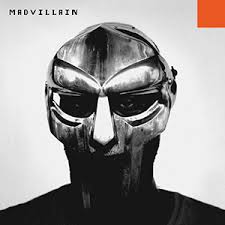


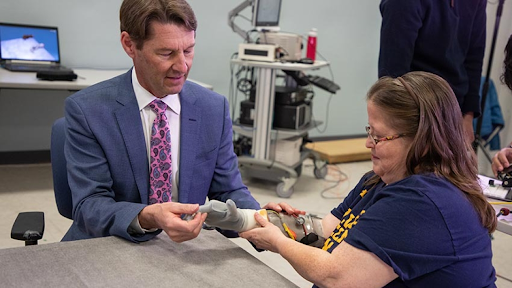



















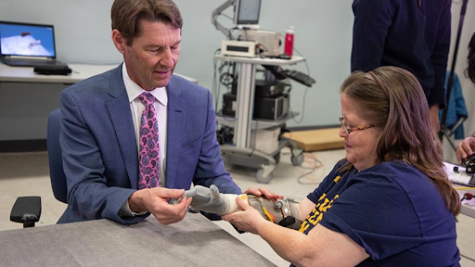







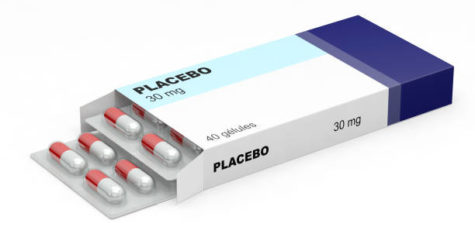
TJ • May 22, 2023 at 1:22 pm
I’ve always wanted to try one of these, but the cost is just too great. It’s very interesting to hear about how much work goes into making them just right, though! Maybe once they’re more affordable, I’ll make that switch.